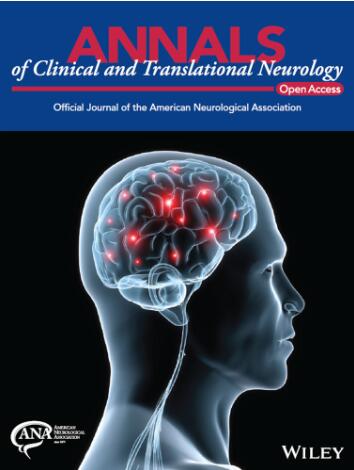Clinical characteristics of double negative atypical inflammatory demyelinating disease: A prospective study
Abstract
Objective
This study aimed to investigate the clinical characteristics and predictors of relapse in double negative atypical inflammatory demyelinating disease (IDD) and to explore potential antigenic targets by tissue-based assays (TBA) using rat brain indirect immunofluorescence.
Methods
We compared the clinical, laboratory, and MRI data of double negative atypical IDD with other IDD patients. Serum samples were collected for TBA. The predictors of relapse were examined over a minimum of 24 months follow-up.
Results
In our cohort of 98 patients with double negative atypical IDD, there was no significant female predominance (58.2%, 57/98). The lesions primarily affected the spinal cord and brain stem, with fewer cases of involvement in the area postrema (5.1%, 5/98) and longitudinally extensive transverse myelitis (43.9%, 43/98). A total of 62.5% (50/80) patients tested positive for anti-astrocyte antibodies based on rat brain TBA. Over a median duration of 39.5 months, 80 patients completed the entire follow-up, and 47.5% (38/80) patients exhibited monophasic course. A total of 36% (18/50) patients positively for anti-astrocyte antibodies had a monophasic course, which is significantly lower than patients negatively for anti-astrocyte antibodies (66.7%, 20/30) (p = 0.008). The presence of anti-astrocyte antibodies (hazard ratio (HR), 2.243; 95% CI, 1.087–4.627; p = 0.029) and ≥4 cerebrum lesions at first attack (HR, 2.494; 95% CI, 1.224–5.078; p = 0.012) were risk factors for disease relapse, while maintenance immunotherapy during remission (HR, 0.361; 95% CI, 0.150–0.869; p = 0.023) was protective factor.
Interpretation
Double negative atypical IDD are unique demyelinating diseases with a high relapse rate. Maintenance immunotherapy is helpful to the prevention of relapse, particularly in patients with anti-astrocyte antibodies or ≥4 cerebrum lesions at first attack.


 求助内容:
求助内容: 应助结果提醒方式:
应助结果提醒方式:


